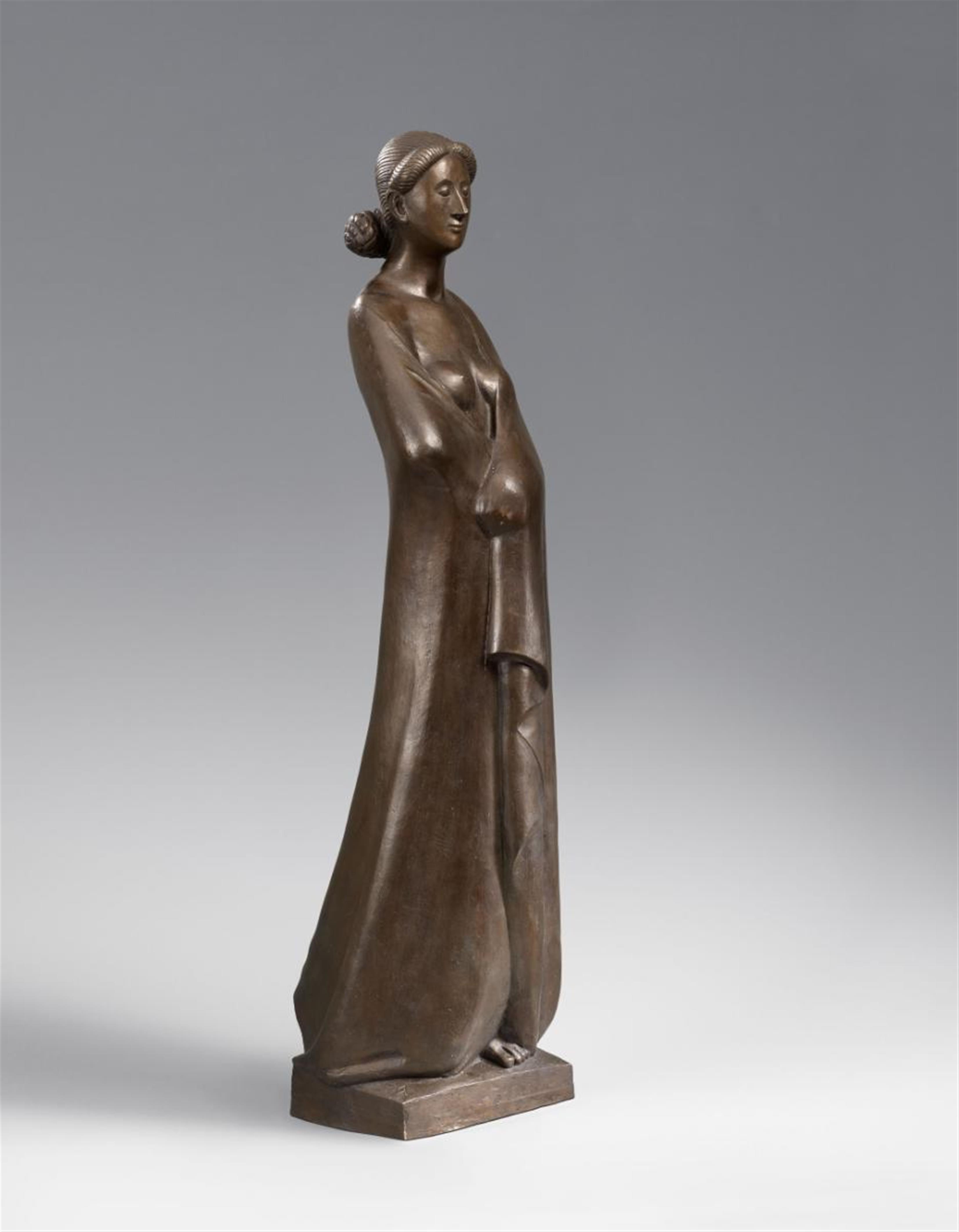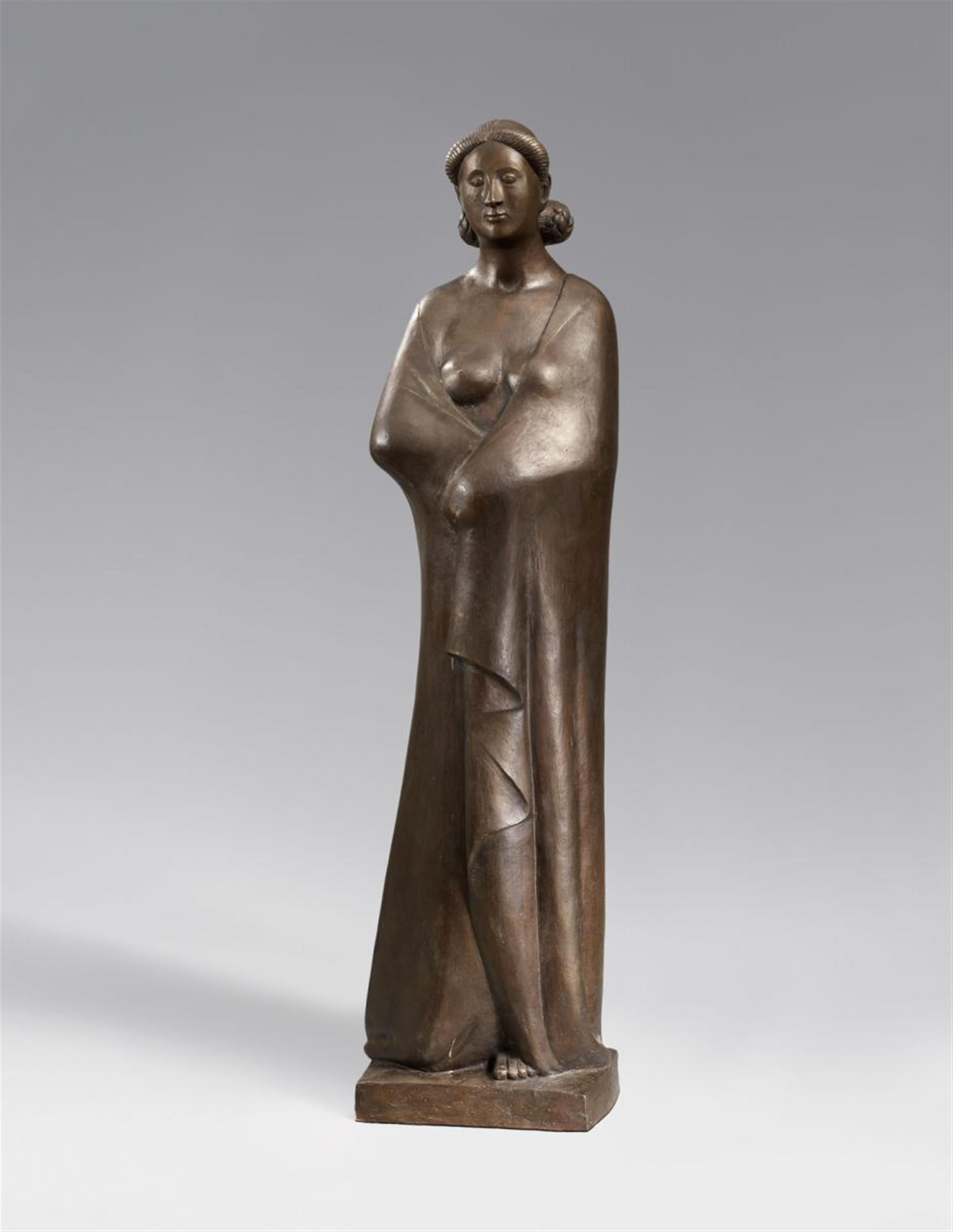Bronze, height 151 cm. Artist's signum to top of pedestal. Edition number 'III' and foundry mark "GUSS BARTH RINTELN" on reverse of side edge of pedestal. One of 4 casts in total. - Even dark brown patina.
Werktagebuch Gips/Bronze (works diary plaster/bronze) 378; Rudloff 579
According to Rudloff, the figure originates in Gerhard Marcks' model studies from 1949. Marcks adopts the arrangement of the robe of the "Prophet" from the Lubeck figural frieze (cf. Rudloff 513), another variant of this draped figure is "Eos II" from 1964 (cf. Rudloff 833).
Gerhard Marcks undertook his first study tour to Greece in 1928, many more tours were to follow in the 1950s and 1960s. The impressions he gathered, particularly at various sites of antiquity, were to provide him with essential artistic stimuli for many years to come. Again and again the artist focused on themes of Greek mythology, not merely in his sculptures, but also in his drawings and in his printed works.
In this life-size Fortuna the braided bun may be the only element to remind us of the elaborate hairstyles of the robed figures of antiquity. Otherwise, there is no specific quality to mark her off as the goddess of fortune and destiny. Instead, she comes across as a serious, thoughtful, inward-looking woman whose introspective gaze and upright posture give her an air of meditative peace and dignity. Her cloak, drawn tightly around her body, with the exception of her half-bared breasts, conceals the shape of her body and gives her the self-contained quality of a statue.
“After the war, in the early 1950s, 'Fortuna' was a symbol of new hope. Yet this fortune is questionable. In Gerhard Marck's understanding of antiquity Greece was a 'model for Europe'. He saw it as symbolising humane values and human life as opposed to an industrialised and technology-focused world which had lost its sense of human dimensions and proportions.” (Gerhard Marcks und die Antike, exhib. cat., Pavlovsk/ Bremen/Halle an der Saale 1993, p. 53).
Catalogue Raisonné
Werktagebuch Gips/Bronze 378; Rudloff 579
Certificate
We would like to thank the Richard Barth foundry, Rinteln, for kind information
Exhibitions
New York 1967 (Leonard Hutton Galleries), A Comprehensive Exhibition of Bronze Sculpture by Gerhard Marcks, cat. no. 12 with full-page illus. p. 10 (other copy); Pawlowsk/Bremen/Halle a.d. Saale 1993 (Palastanlage Pawlowsk/Gerhard-Marcks-Haus/Staatliche Galerie Moritzburg), Gerhard Marcks und die Antike, with full-page illus. n. pag.; Jena 2004 (Stadtmuseum), Gerhard Marcks. Zwischen Bauhaus und Dornburger Atelier, cat. no. I/30 with full-page illus. p. 77




